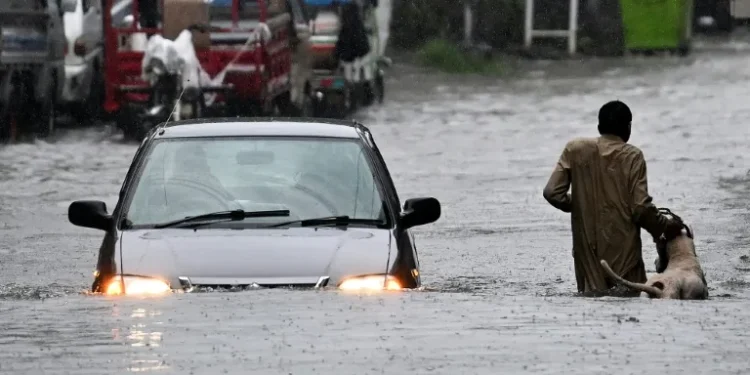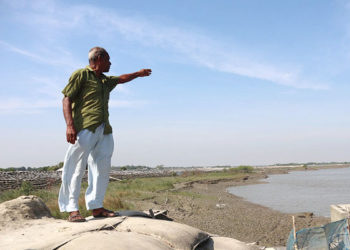Torrential rain has poured almost without pause across parts of Punjab province since Wednesday morning, causing urban flooding and houses to collapse.
Rescue teams used boats to evacuate families from villages along the river further south in the morning, but the water had begun to recede by the afternoon.
“Children were screaming for help, and women stood on rooftops, waving their shawls and begging to be rescued,” said Tariq Mehbood Bhatti, a 51-year-old farmer in Ladian village.
Residents living in low-lying areas near the Nullah Lai river that runs through Rawalpindi city, neighbouring the capital Islamabad, were ordered to evacuate after a sharp rise in the water level.
“Rescue teams are on standby for more evacuations,” a spokeswoman for the disaster agency said.
“Residents of vulnerable areas should prepare emergency kits with food, water, and essential medicines for three to five days in case of an emergency,” the National Disaster Management Authority (NDMA) added in an alert.
The Rawalpindi government declared a public holiday on Thursday to keep people at home, with the national meteorological department warning that heavy rain would continue until Friday.
– Electrocutions, buildings collapsing –
Around 180 people have been killed, including 70 children, and about 500 injured since the start of the monsoon on June 26, according to the disaster agency.
“In the last 24 hours, 54 people were killed and 227 injured across Pakistan, with the majority of fatalities reported from Punjab,” the NDMA spokeswoman told AFP, adding that the toll had been counted at 8:00 am (0300 GMT) on Thursday.
The majority of deaths were caused by collapsed houses and sudden flash floods, while dozens were also electrocuted.
Monsoon season brings South Asia 70 to 80 percent of its annual rainfall, and runs from June until September in India and Pakistan.
The annual rains are vital for agriculture and food security, and the livelihoods of millions of farmers, but also bring destruction.
South Asia is getting hotter and has seen shifting weather patterns in recent years, but scientists are unclear on how exactly a warming planet is affecting the highly complex monsoon.
Pakistan is one of the world’s most vulnerable countries to the effects of climate change, and its 255 million residents are facing extreme weather events with increasing frequency.
In 2022, monsoon floods submerged a third of the country and killed 1,700 people.
AFP




















